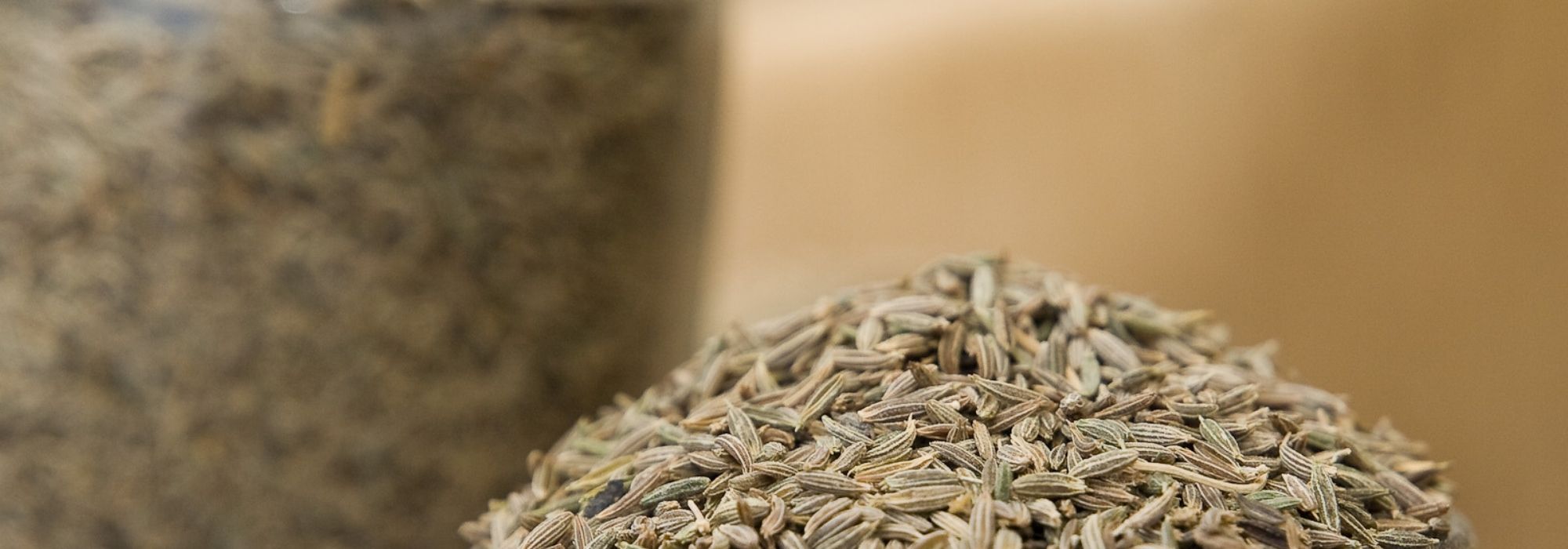
Cumin: sowing, growing and harvest
Contents
Cumin in a nutshell
- Behind the term “cumin” are actually two annual herbaceous plants, both belonging to the Apiaceae family, but slightly different in their botanical genus. On one side, there is cumin (Cuminum cyminum), and on the other, caraway (Carum carvi), commonly known as meadow cumin.
- These cumins are aromatic plants, used for their foliage, but especially for their seeds.
- Although of different origins, cumin and meadow cumin thrive in a sunny location and rich, cool, well-drained soil.
- Cumin is an ancient plant, known since antiquity for its medicinal properties.
A word from our expert
When cumin is mentioned, one inevitably thinks of the spice that comes in the form of small seeds. However, from a botanical perspective, a first confusion arises. Indeed, behind the term “cumin” actually lie two plants from the Apiaceae (Umbelliferae) family but of distinct botanical genera: cumin in the strict sense is the species Cuminum cyminum, while the cumin of the meadows, also known as caraway, is the species Carum carvi. The two plants resemble each other, as do the seeds. However, they have very different flavours: cumin seeds have a warm taste typical of Eastern cuisine, while caraway seeds are more subtle, sweeter, and more aniseed-like.
The other major distinction between “these two cumins” lies in their natural growing areas. Cumin (Cuminum cyminum) grows around the Mediterranean, whereas cumin of the meadows (Carum carvi) is a plant of cold to mountainous regions. It can be easily found in the cool meadows of the Alps, Vosges, or Jura. Their multiple names also help establish the distinction: cumin is also referred to as “Moroccan Cumin,” “Maltese Cumin,” while caraway or cumin of the meadows is also known as “Anise of the Vosges,” “Hollander Cumin,” or “mountain cumin.”
Nevertheless, these two aromatic herbaceous plants share some common features, at least in their appearance, both having thread-like foliage, somewhat resembling that of carrots. Moreover, they are widely known and used since antiquity, both for their unique flavour and their medicinal properties.
Description and botany
“`html
Botanical data
- Latin name Cuminum cyminum and Carum carvi
- Family Apiaceae
- Common name cumin, Moroccan cumin, Maltese cumin, white cumin, false anise; and for Carum carvi
- Flowering summer
- Height 40 to 70 cm
- Exposure sunny
- Soil type rich, cool and well-drained
- Hardiness not hardy or hardy down to -20°C
The Apiaceae family (formerly known as Umbelliferae) comprises over 3000 species spread across 420 botanical genera. However, all plants in the Apiaceae family share the common characteristic of producing inflorescences in the form of umbels that can become quite large. Their leaves are most often divided into fine segments, and overall, they are herbaceous plants. Among the most widespread, we can distinguish carrot, celery, fennel, coriander, parsley, or cumin. Or rather, cumins, since we will focus on cumin (in general!) and meadow cumin. For there is a false etymological sense surrounding cumin.
Let’s start with cumin (Cuminum cyminum), a plant native to the Near East, particularly the Mediterranean basin. Long before our era, its seeds were already used as a spice. The Egyptians sprinkled them in the tombs of the Pharaohs, and the Hebrews used them as a medium of exchange. The flavour of cumin allowed it to spread quickly through the Arab world and then cross the borders of the West and Europe via the Crusaders. At various times, cumin has been considered a good luck charm, a drug, a symbol of fidelity, or an aperitif to stimulate the appetite… Nevertheless, Charlemagne had it recorded in the Capitular of Villis to be cultivated in his kingdoms.
Today, cumin seeds, light brown in colour, are widely used as spices around the world. They are also part of traditional blends from all corners of the globe, from curry to chili, passing through garam masala or ras-el-hanout. When used whole, the seeds have a strong, slightly acrid and spicy flavour.
The meadow cumin or caraway (Carum carvi) is believed to have origins in a broader geographical area with a more temperate climate, ranging from North Africa to Asia. Its use is indeed attested among the Egyptians, who used it to embalm mummies. With the development of the spice trade, meadow cumin naturalised in France, in cooler regions, where it now grows spontaneously.
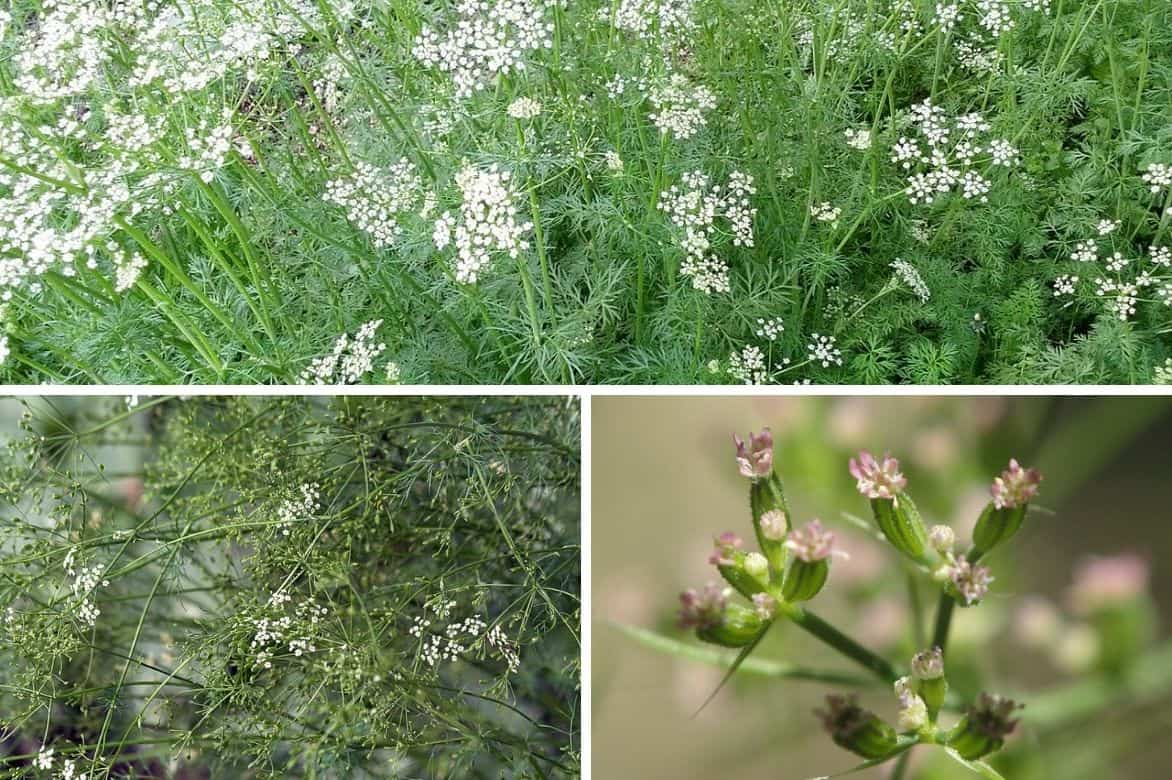
Foliage and white or pink flowers of cumin
As with cumin, it is the seeds of caraway that flavour many dishes. Although the fresh leaves and root can also be consumed. The seeds of caraway or meadow cumin distil aniseed and delicately lemony flavours, which are milder than those of cumin.
Botanically speaking, cumin and meadow cumin are two herbaceous plants in the Apiaceae family. Cuminum cyminum is an annual herbaceous plant, not hardy, reaching about thirty centimetres in height, with an upright habit. In contrast, Carum carvi is a biennial plant, particularly hardy, which can reach 70 cm in height.
The leaves of cumin are thread-like and very long, dark green. Those of meadow cumin or caraway are oblong, shorter, pinnatisect (that is, symmetrical on either side of the vein) and slightly downy. They display a bright green colour. Meadow cumin has a fleshy, taproot that is aromatic (it has a scent reminiscent of carrot). The stems are branched, erect, and hollow.
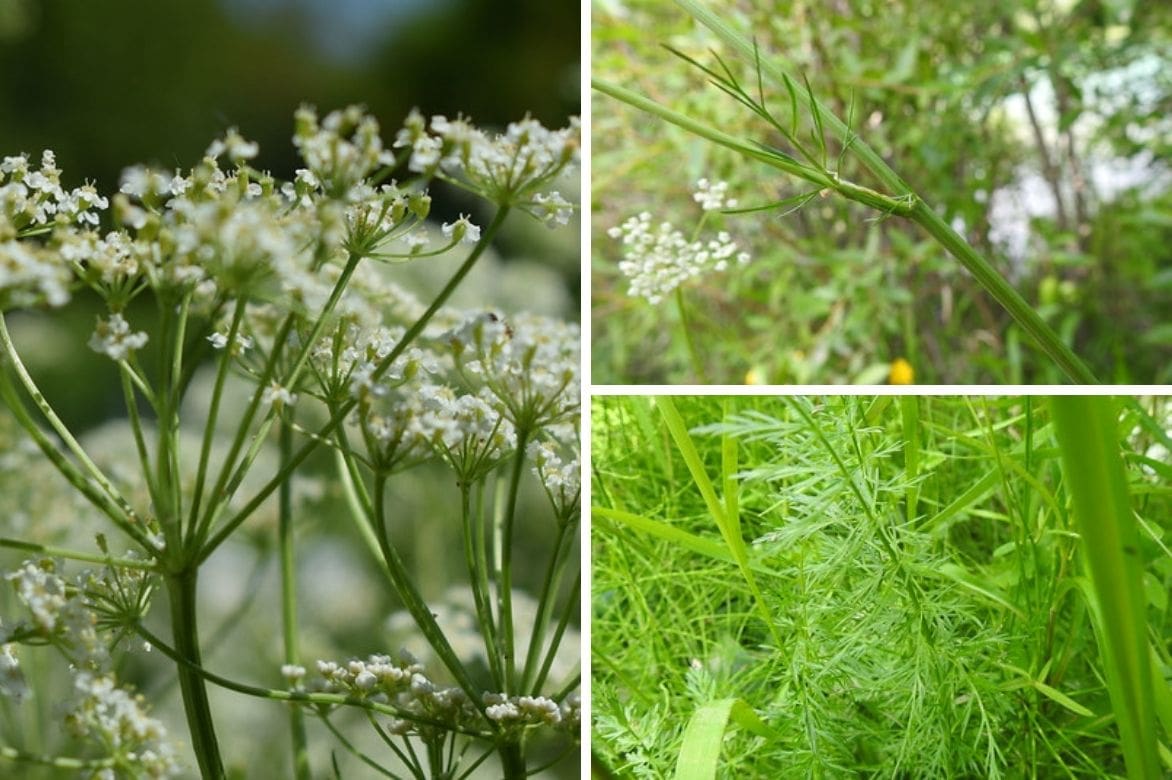
Flowers, woody stems, and foliage of meadow cumin (Carum carvi)
Once a year, in June or July, cumin produces flowers gathered in umbels, white with a slight pink tint. Caraway flowers from May to July but only from the second year. Subsequently, the fruits form. Measuring 3 to 6 mm long, the fruits of cumin appear in an oblong shape on the branches and bear a tuft of hairs. They dry and produce a single brownish-green seed, with two long, linear carpels. The fruit of caraway is ovoid and very aromatic, producing darker, blackish seeds that are rounder with a single carpel.
Cumin and meadow cumin are therefore two plants with divergent botanical characteristics. And especially with distant flavours and uses. Yet, confusion remains, not among botanists, but among enthusiasts of good dishes.
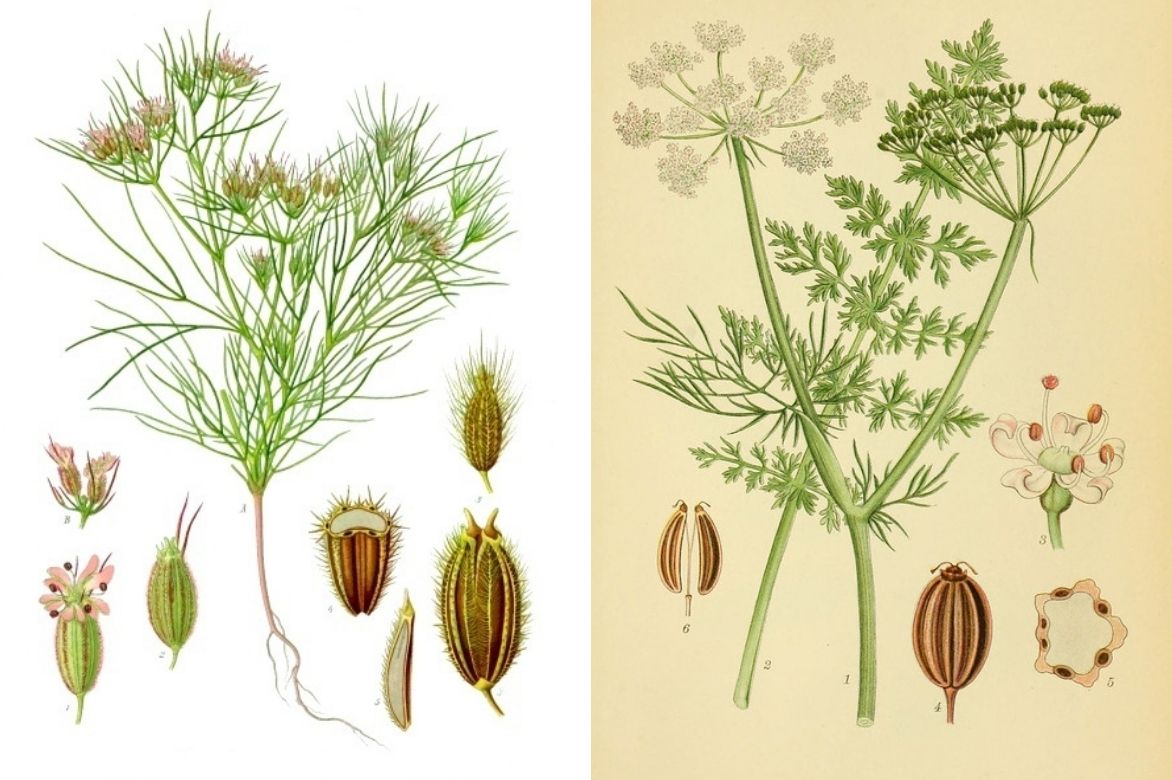
Botanical plates of Cuminum cyminum and Carum carvi
“`
Read also
7 spices to grow in the gardenThe different varieties of cumin
At the risk of repeating ourselves, let us remind you one last time that cumin (Cuminum cyminum) is a non-hardy plant that is cultivated around the Mediterranean, while caraway (or meadow cumin) is a biennial plant that grows in harsher climates in Europe. These seeds share similar characteristics: cumin flavours dishes from “hot” countries such as curry, tagine, couscous, and chili, while caraway adds its taste to dishes from colder countries like sauerkraut.
Our variety of cumin
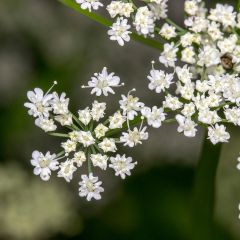
Cumin - Cuminum Cyminum
- Flowering time July, August
- Height at maturity 60 cm
Our varieties of caraway or meadow cumin
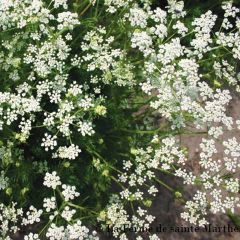
Carum carvi - Ferme de Sainte Marthe Seeds
- Flowering time June, July
- Height at maturity 60 cm
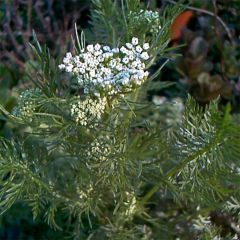
Organic Caraway - Carum carvi
- Flowering time July to September
- Height at maturity 60 cm
Discover other Cumin
View all →Available in 1 sizes
Available in 1 sizes
Available in 1 sizes
Available in 1 sizes
Available in 1 sizes
Available in 1 sizes
Planting cumin
Where to plant them?
Cumin (Cuminum cyminum) thrives in rich soils that remain cool while being well-drained. Additionally, the soil should be loose and light. Stagnant water would be fatal for it. Adding well-matured compost to the soil is beneficial. It also requires a very sunny location, especially sheltered from cold winds.
Caraway (Carum carvi) also prefers well-drained and aerated soils. Sun exposure is recommended, although caraway is less fussy about temperature. It is hardy down to -20°C.
When to plant them?
Cumin seeds need warmth to germinate. Therefore, for sowing directly in the ground, you must wait until the soil is warmed to at least 12°C, or higher in some regions. Sowing can begin in May. Alternatively, you can sow indoors in pots as early as March. Germination takes about 2 to 3 weeks. You can then transplant them outdoors from May.
Caraway is less demanding and can be sown directly in the ground from April to September. Direct sowing is preferable as caraway does not like being moved.
How to plant them?
Cumin and caraway are sown broadcast. Do not cover with too much soil; one centimetre is sufficient. Once the seedlings reach 5 cm, thin them out to leave one plant every 15 to 20 cm for caraway, and 20 to 30 cm for cumin. Maintain the same distances if you are transplanting seedlings sown indoors. For more information, read our tutorial: “How to Sow Cumin?“.
It is also possible to grow cumin and caraway in pots or containers using a mix of garden soil, sand, and compost. Don’t forget the essential clay balls at the bottom of the pot to ensure good drainage, which is vital for cumin. You can then sow the seeds directly and thin them out when the seedlings reach 5 cm. Once the risk of frost has passed, place the pots in a sunny spot outside.
Multiplying cumin
Cumin is only multiplied by sowing. Caraway tends to self-seed spontaneously, potentially taking up a lot of space. You can leave one plant in place. Otherwise, cut the stems before the seeds reach full ripeness.
Growing and care of cumin
Cumin and caraway require minimal but slightly different care, especially regarding watering. Cumin does not appreciate the drying out of the substrate, which is why it is advisable to water it at least once a week, preferably with rainwater. In contrast, caraway should only be watered if the weather is very hot.
Otherwise, weeding and hoeing are recommended to prevent competition from adventive plants and to promote water penetration. Mulching is always beneficial.
Little susceptible to diseases and pests, cumin and caraway do not have any particular enemies. However, slugs and snails may occasionally attack young cumin plants. Feel free to consult Ingrid’s advice sheet that explains 7 ways to fight slugs effectively and naturally.
Harvesting and storing cumin and caraway seeds
Cumin seeds are harvested approximately 3 to 4 months after sowing. For meadow cumin, patience is required as the seeds are harvested the following year, usually in July. However, it is possible to harvest some caraway leaves three months after sowing.
As for the harvesting method, it is the same. When the seeds have reached ripeness, meaning they turn brown, it is time to cut the stems and gather them into bouquets. These bouquets are then placed in a bright, dry, and airy location to allow the seeds to finish drying.
To make harvesting easier, you can place paper under the bouquets to catch the seeds. Alternatively, you can enclose the bouquets in jute bags where the seeds will fall.
Cumin seeds can then be stored for one to two years in an airtight container, in a cool place away from light and moisture. You can also grind them into powder, but they will lose their flavour in 2 to 3 months.
Gwenaëlle provides more information in: How to harvest and store cumin seeds?
Cumin in the kitchen
We have now reached the sensitive point, namely the confusion between cumin and caraway, also known as meadow cumin. This confusion is perpetuated by the initial resemblance of the seeds. Only the attentive botanist is not fooled by this apparent similarity… The cumin seed has two carpels, while the caraway or meadow cumin seed has only one.
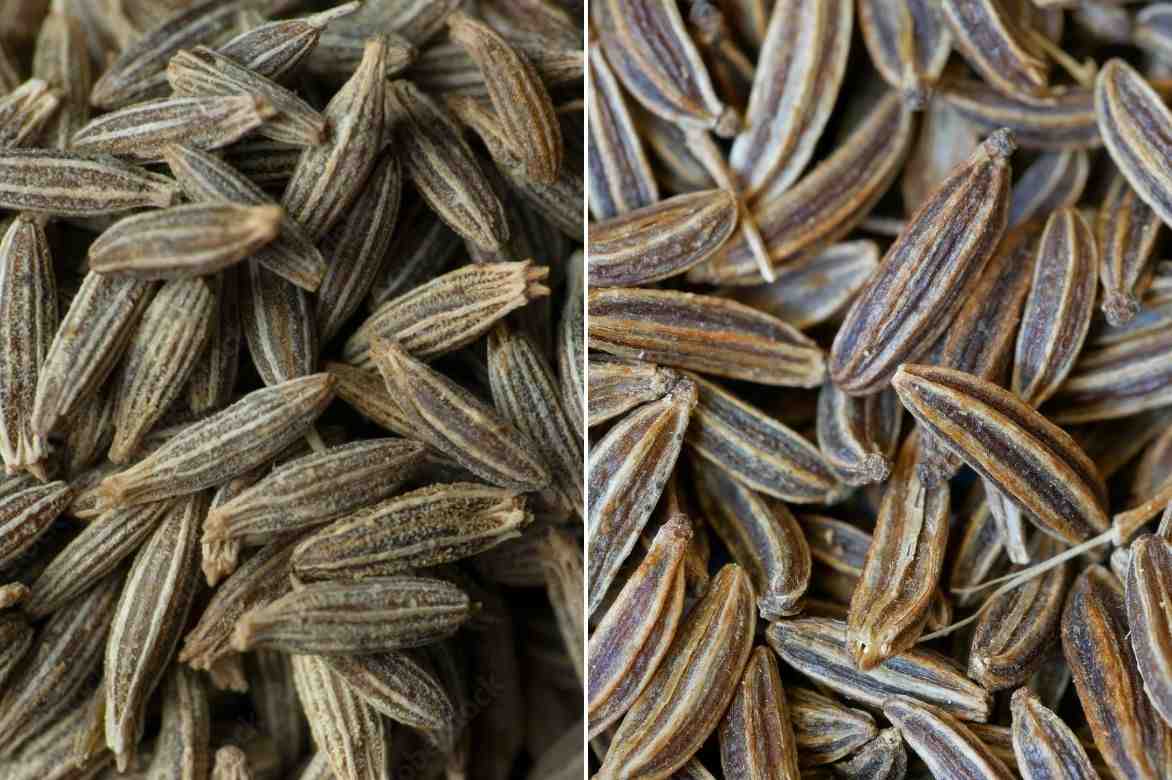
Cumin seeds are darker and have two carpels, while caraway or meadow cumin seeds are greener and have only one carpel.
The fine gourmet or the seasoned chef will also know how to tell the difference by taste. Although!
In summary, cumin seeds are used to spice, flavour, and enhance dishes from sun-drenched countries, while meadow cumin is more commonly found in dishes from the northern hemisphere. Cumin is thus one of the main ingredients in spice blends such as ras-el-hanout, essential for making couscous or tagines, Indian curry and garam masala, and chili in Mexico… It is also found in falafels, hummus, merguez, gazpacho, empanadas, Tunisian lablabi, Turkish köftes, guacamole, colombo, and shawarma… You can also unleash your creativity by incorporating it into stews, fish dishes, and vegetables.
Meadow cumin or caraway is traditionally used to spice sauerkraut or goulash. It is very commonly used in German, Austrian, or Hungarian cuisines, where it adds its aniseed flavour. It is also found in cheeses like gouda, munster, or géromé. It can also be used to produce spirits such as schnapps, Dutch allesch, gin, and kummel…
And what if we talked about nigella?
After cumin and meadow cumin, let’s add black cumin to the list, just to further confuse things… But rest assured, this black cumin is nothing like cumin. It is actually nigella, a small black seed also used in Middle Eastern, Maghreb, and African cuisine, with a pungent and bitter flavour. This tiny seed is also recognised in phytotherapy for its medicinal properties on the immune and cardiovascular systems, digestion, and respiratory pathways.
This small seed comes from an herbaceous plant in the family Ranunculaceae, Nigella sativa. It should not be confused with Damask nigella (Nigella damascena), a beautiful flowering plant whose seeds are not edible.
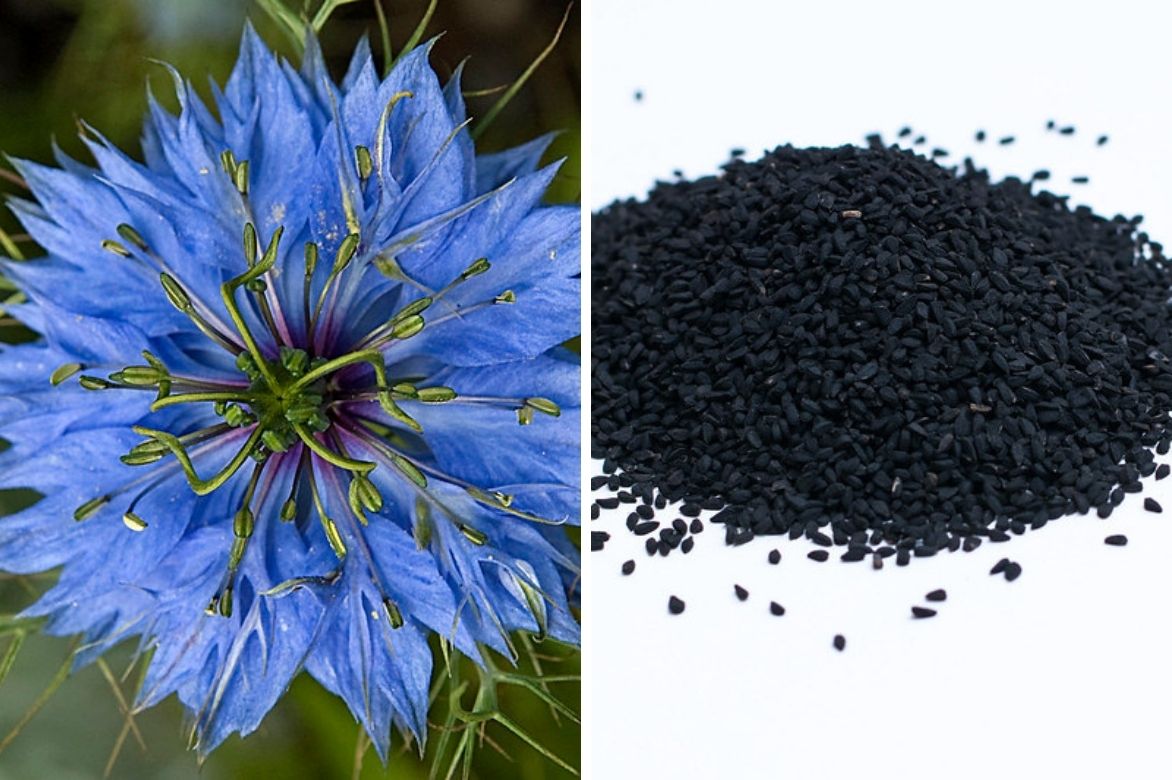
Nigellas, the seeds of Nigella sativa, are also called black cumin
- Subscribe!
- Contents

































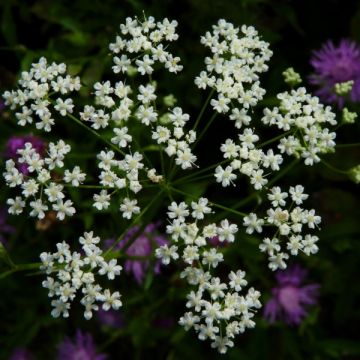
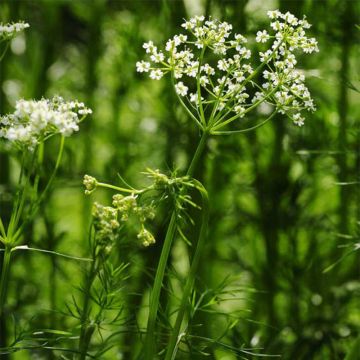
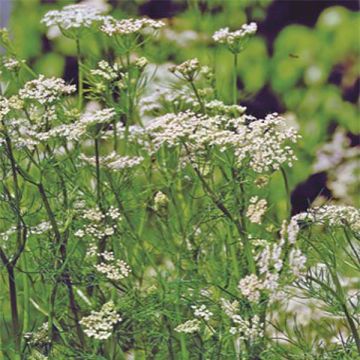

Comments